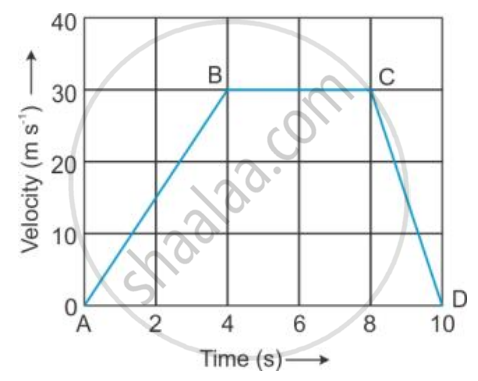Advertisements
Advertisements
प्रश्न
A bus moving along a straight line at 20 m/s undergoes an acceleration of 4 m/s2. After 2 seconds, its speed will be:
पर्याय
8 m/s
12 m/s
16 m/s
28 m/s
उत्तर
28 m/s
Acceleration of the moving object is 4 m/s2
Initial velocity is 20 m/s.
Time taken is 2 sec.
By applying 1st equation of motion we get,
v = u + at
= 20 + 2(4)
= 28 m/s
So, the answer is
(d) 28 m/s
APPEARS IN
संबंधित प्रश्न
Give one example of a motion where an object does not change its speed but its direction of motion changes continuously.
The speed of a car is 72 km h-1. Express it in m s-1.
A car travels the first 30 km with a uniform speed of 60 km h-1 and the next 30 km with a uniform speed of 40 km h-1. Calculate :
The total time of journey,
The average speed of the car.
A car is moving with a velocity 20 m s-1. The brakes are applied to retard it at a rate of 2 m s-2. What will be the velocity after 5 s of applying the brakes?
Draw the shape of the velocity-time graph for a body moving with (a) Uniform velocity and (b) Uniform acceleration.
The velocity-time graph of a moving body is given below in Figure

Displacement in each part AB, BC and CD.
A train is moving with a velocity of 90 km h-1 . It is brought to stop by applying the brakes which produce a retardation of 0.5 ms-2 Find :
(i) The velocity after 10 s , and
(ii) the time taken by the train to come to rest .
Define average velocity and give one example.
Write down the type of motion of a body along with the A – O – B of the following distance – time graph.

Define speed of a body.
